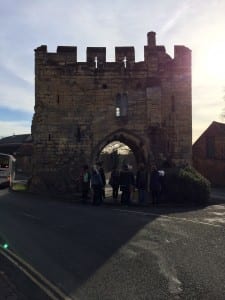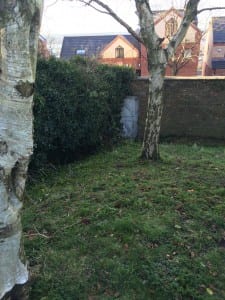We performed our site specific piece three days ago, which has given me time to reflect on our process and the day itself.
Unfortunately, it was one of the wettest and windiest days we have experienced outside for our performance, though we tried to keep our spirits high and continue on. We arrived early before the performance was planned to start, and placed our moments of coincidence and the scallop shells around the tours walk, as some can be seen documented here. We all enjoyed preparing for the piece, and were intrigued to which ones the audience would see and connect to. For the performance, we had a small audience of a couple of people, due to the bad weather, though because of the nature of our piece being an individual audio tour, the number of the audience had no bearing on the actual performance. They each arrived with their audio already downloaded through the event page, and once they had been introduced to the tour and offered their scallop shell, they listened to the audio and walked the piece. When the tour had ended for them, they returned to the meeting point and were asked for their feedback on how the journey was for them individually. All said they had a positive experience and enjoyed spotting the scallops and the moments of coincidence, whether it be on the audio itself or a visual prop that we had placed. Additionally, we were told they each noticed more moments that we had not planned, such as a robin tweeting, an elderly man walking his dog and a van with the word “pilgrim” in bright and bold lettering parked where we first met. These were true moments of chance, which added a pure connection to our audio that was just there for the performance in the right place at the right time. As a group, we were all very proud and pleased with how the performance went, and despite some of the obstacles we faced on the day, such as the low audience number and the weather, I think it was a success.
Moreover, because our piece was an audio tour, the performance can live on in the future, though without the moments of coincidence that we purposefully planned for the day. However, as we ourselves experienced, true moments of coincidence can occur whilst the audio is played, making it that much more serendipitous. In the future, perhaps the piece would be better experienced when performed on a “nicer day”, though this is not something we can truly plan for either. Regardless of this possibility, our piece can be performed at any time, allowing for it to continue on without us.
Overall, I personally feel very happy with how the performance played out and the progress we as a group made from when we initially came together to the final performance three days ago. I think we all embraced what site specific performance can be, and in the end made something that reflected what we all wanted to make at the very beginning. As Mike Person suggests, our performance “may also become a lasting part of the story of that place” (Pearson, 2010, 16), offering a bigger purpose for the hard work and time we put into our piece. Though this module has been a challenge at times, it has impacted how I define “performance”, and shown me a new world to “drama” that I had no previous idea or concept of. I believe I have grown as a performer, and learnt that a “stage” to perform on or with can be found anywhere.
Pearson, M. (2010) Site-Specific Performance. Hampshire: Palgrave Macmillan.




